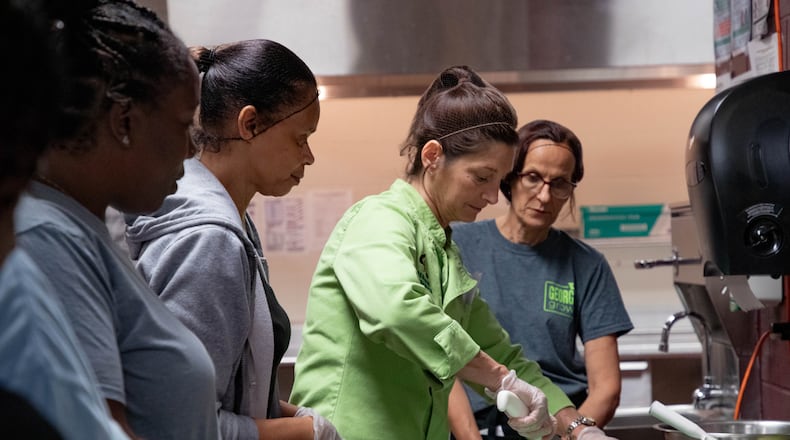Brittani Rowe, the culinary manager for the Marietta City Schools, is unafraid of innovation. “It’s something we thrive on,” she said.
Putting that philosophy into action will be tested this fall when the district’s high and middle school cafeterias introduce a notably kid-scary option: kale. The love-it-or-hate-it leafy green will be one piece of the fresh produce and meat options Rowe and her crew will receive this fall through a $60,000 grant from the Georgia Advancing Agriculture, Community, Resilience and Equity (ACRE) Collective, a nonprofit, regional food distributor that connects farmers with institutional kitchens. Marietta is one of the first districts in Georgia to team up with ACRE’s pilot program designed to increase the amount of local food in school meals.
“We wanted to work in a district where students wouldn’t have access on a regular basis to local food items,” said ACRE Program Manager Emily Hennessee. “We work to provide livelihoods for growers within 250 miles of our location in East Point and who have the capacity to supply a school district that many people rely on for their food.”
During a pilot launch in early August, ACRE experts led a training session with the Marietta district’s nutrition staff that included knife skills, food safety for raw meat and how to incorporate new items into the menus. Getting a wider variety of foods on cafeteria trays appealed to Rowe.
“Increasing the variety of foods will also increase access, so items will be available to students who may never have tried them,” said Rowe.
Along with the standard tomatoes, broccoli and cucumbers, lunch may now feature mushrooms, onions and bell peppers on the salad bar and more fruits such as blueberries and peaches. At the same time, more ethnic dishes will give students some of the foods they often have at home.
“We are a minority/majority system, and adding more authentic food to the menu is like bringing a piece of home into the school,” said Rowe. “We’re trying hard to increase the ethnicity and culture of the food for our students because that helps them feel more comfortable.”
Along with cafeteria staples of pizza and hamburgers, students may soon find pupusas, plantains, tostones, chicken chimichurri, beef picadillo and Brazilian cheese balls. And there will be kale, in salads and the Caesar wrap.
“It’s all about learning,” said Rowe. “Being the first to try something isn’t scary for us.”
Information about Marietta City Schools is online at marietta-city.org. Details about ACRE can be found at thecommonmarket.org/blog/the-georgia-acre-collective.
SEND US YOUR STORIES. Each week we look at programs, projects and successful endeavors at area schools, from pre-K to grad school. To suggest a story, contact H.M. Cauley at hm_cauley@yahoo.com or 770-744-3042.
About the Author
The Latest
Featured


